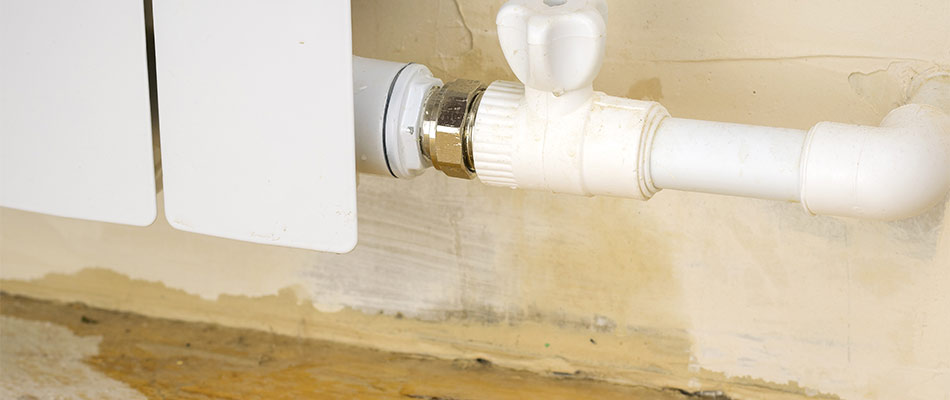Detect Concealed Water Line Leaks: Six Smart Detection Tips
Detect Concealed Water Line Leaks: Six Smart Detection Tips
Blog Article
We've come across this great article about Finding hidden leaks below on the web and reckoned it made sense to relate it with you over here.

Early discovery of dripping water lines can reduce a possible disaster. Besides saving you cash, it will certainly lessen the stress and also aggravation. The minute you locate a leak, calling your plumber for repair services is the best option. Some little water leaks may not be noticeable. If you can not spot it with your nude eyes, below are some hacks that aid.
1. Take A Look At the Water Meter
Every residence has a water meter. Checking it is a guaranteed manner in which assists you uncover leakages. For beginners, turn off all the water sources. Guarantee nobody will certainly purge, make use of the tap, shower, run the cleaning equipment or dishwasher. From there, go to the meter and watch if it will change. Because nobody is using it, there ought to be no motions. If it relocates, that suggests a fast-moving leak. If you discover no modifications, wait a hr or two as well as check back again. This means you may have a slow-moving leakage that might even be below ground.
2. Check Water Intake
Analyze your water expenses and also track your water intake. As the one paying it, you must see if there are any type of inconsistencies. If you identify sudden changes, in spite of your usage being the same, it implies that you have leaks in your plumbing system. Bear in mind, your water expense ought to drop under the very same range monthly. An unexpected spike in your bill shows a fast-moving leakage.
A constant boost every month, also with the very same practices, reveals you have a slow leakage that's also gradually escalating. Call a plumber to completely check your home, specifically if you feel a cozy area on your flooring with piping below.
3. Do a Food Coloring Test
When it comes to water usage, 30% comes from commodes. If the color in some way infiltrates your bowl during that time without flushing, there's a leakage between the storage tank and also bowl.
4. Asses Exterior Lines
Don't fail to remember to examine your exterior water lines too. Should water seep out of the connection, you have a loose rubber gasket. One tiny leak can squander bunches of water and surge your water expense.
5. Check as well as Examine the Circumstance
Homeowners should make it a habit to examine under the sink counters and also also inside cupboards for any kind of bad odor or mold and mildew development. These two red flags show a leakage so timely interest is required. Doing routine evaluations, even bi-annually, can conserve you from a major problem.
If you recognize your house is already old, maintain a watchful eye on your heaters, tubes, pipelines etc. Look for stainings and damaging as a lot of home appliances and pipelines have a life expectancy. They will certainly likewise naturally wear away because of tear and also use. If you think dripping water lines in your plumbing system, don't await it to intensify. Call a professional plumber as soon as possible so you don't end up with a dreadful mess in your home.
Early detection of dripping water lines can mitigate a prospective disaster. Some small water leakages may not be visible. Examining it is a surefire method that aids you discover leakages. One tiny leakage can waste heaps of water and increase your water bill.
If you suspect dripping water lines in your plumbing system, do not wait for it to escalate.
WARNING SIGNS OF WATER LEAKAGE BEHIND THE WALL
PERSISTENT MUSTY ODORS
As water slowly drips from a leaky pipe inside the wall, flooring and sheetrock stay damp and develop an odor similar to wet cardboard. It generates a musty smell that can help you find hidden leaks.
MOLD IN UNUSUAL AREAS
Mold usually grows in wet areas like kitchens, baths and laundry rooms. If you spot the stuff on walls or baseboards in other rooms of the house, it’s a good indicator of undetected water leaks.
STAINS THAT GROW
When mold thrives around a leaky pipe, it sometimes takes hold on the inside surface of the affected wall. A growing stain on otherwise clean sheetrock is often your sign of a hidden plumbing problem.
PEELING OR BUBBLING WALLPAPER / PAINT
This clue is easy to miss in rooms that don’t get much use. When you see wallpaper separating along seams or paint bubbling or flaking off the wall, blame sheetrock that stays wet because of an undetected leak.
BUCKLED CEILINGS AND STAINED FLOORS
If ceilings or floors in bathrooms, kitchens or laundry areas develop structural problems, don’t rule out constant damp inside the walls. Wet sheetrock can affect adjacent framing, flooring and ceilings.
https://www.servicemasterbyzaba.com/blog/how-to-detect-water-leakage-in-walls/

I'm very interested in Leaking water lines and I am praying you liked the blog posting. Loved our post? Please share it. Help someone else locate it. We treasure reading our article about Top leak detection hacks.
We're ready, dial now! Report this page